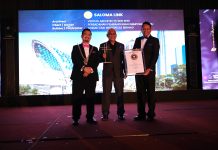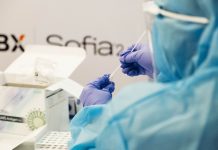SEOUL, South Korea, The term “urban regeneration” has recently become one of the important issues in many cities around the world. The Seoul Metropolitan Government has started re-turning the city’s identity and carried out its urban development with focusing on “urban regeneration,” instead of “redevelopment.” In 2017, a total of 131 urban regeneration projects are currently being implemented throughout the city. Some of the city government’s representative urban regeneration projects include Dasi (Re) Sewoon Shopping Center, Mapo Oil Tank Cultural Park, and Seoul Battleship Park.
The Mapo Oil Tank Cultural Park is the case of marrying urban regeneration up with cultural values based on the restoration of the place. The Mapo Oil Depot was built in 1978 by the Seoul Metropolitan Government to supply oil in case of emergency and access to it is restricted for 41 years. With the construction of the Seoul World Cup Stadium for the 2002 World Cup, it was closed down in December 2000. The city government designated this site as a place of urban regeneration in 2013, and transformed it into an eco-friendly cultural complex after two years of construction. Now it features a performance hall, an open-air stage, a community center, and other cultural facilities as well. Six oil tanks, interior and exterior materials, and retaining walls were all reused to regenerate the site. Another outstanding point is the fact that a citizen-led urban regeneration process was applied from the initial stage of the project. The operation of the park will also be made through the co-ordination committee led by the local community.

Seoul Battleship Park opened in November 2017 at the bank of Han River. Seoul Battleship Park is a multipurpose park opened in November 2017 at the bank of Han River. Covering an area of 6,942m2, the Park showcases the three decommissioned vessels rented out by the navy to the city government for free. These vessels have been preserved their original status as much as possible, providing a rare opportunity for citizens and visitors to go inside, look around and experience the lives of naval officers. Frigate Seoul is 102 meters in length, 11.6 meters in width and its total height including the submerged part is 28 meters. The three-story information center with 485m2 in size connects to vessels through bridges, and its rooftop observation deck provides a magnificent view of the Seoul Battleship Park.
The Seoul Metropolitan Government implements urban regeneration projects using underused and underutilized infrastructure. The meaning of urban regeneration is to restore local history and memories into diverse contents for citizens to experience them with a sense of pride. The key to success of urban regeneration is ready to be from the active civic participation and cooperation between the government and experts as well.







